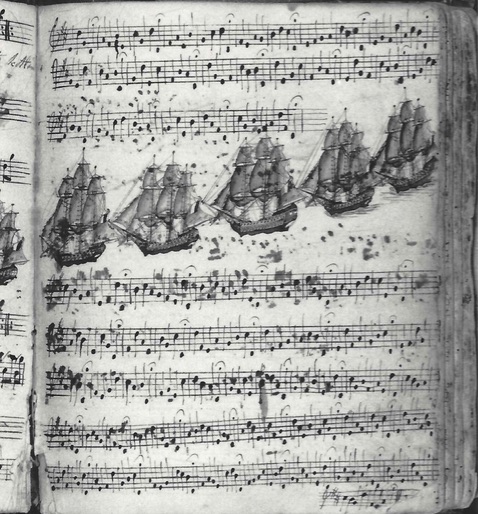Annotation:Battle of the Nile (The)

The melody accompanied a song with the title "Battle of the Nile" which was published England soon afterward, and subsequently in Philadelphia (c. 1800, by music publisher J.B. Blake) and Boston (by G. Graupner in 1802[1], and it was referred to in a theatrical playbill around that time in Quebec City, where it was "sung in the character of a Hibernian Tar"[1]. The overheated words begin:
Arise, arise, Britannia's sons, arise and join in the shouts of the patriotic throng,
Arise, arise, Britannia's sons, arise and let Heav'ns wall echo with your song.
For the genius of Albion, Victory proclaiming,
Flies through the world our rights & deeds maintaining
And the Battle of the Nile shall be foremost on the file,
And the battle of the Nile shall be the foremost on the file.
As a march, the tune appears in numerous publications and musicians manuscripts on both sides of the Atlantic, dating to the beginning of the 19th century. Printed publications in which it appears include J. Ball's Gentleman's Amusement Book 3 (London, c. 1815, reprinted in 1830), Paff's Gentleman's Amusement No. 1 (New York, 1812), Oliver Shaws' For the Gentlemen (Dedham, Mass., 1807), and Edward Riley's Flute Melodies, vol. 2 (New York, 1817). The march also appears in the manuscript collections of Dexter Dean (Dedham, Mass., 1800), fiddler Allen Ash (1800-1889, Baltimore, Ontario) and Daniel Henry Huntington (Onondaga, N.Y., 1817). In Ireland, "Battle of the Nile" is contained in the large mid-19th century music manuscript collection (volume 1, p. 209) of County Cork cleric and uilleann piper James Goodman.
It also was entered into the music manuscript collections of Joshua Gibbons (1778-1871, Lincolnshire), Rev. R. Harrison (1815, Cumbria), John Buttery (early 19th century, Lincolnshire, No. 727), and Patrick McGahan (1817, Ireland). Buttery, a fifer with the 34th Regiment is likely to have been present at the battle. His manuscript contains sketches of the Egyptian coastline and several ships from the British and French fleets.

